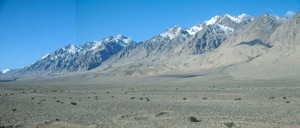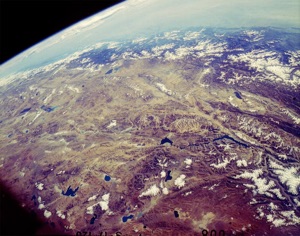Karakorum Fault - W Tibet
Robin Lacassin
Directeur de recherche CNRS
Tectonique - IPGP
The total offset, lifespan and slip rate of the Karakorum fault zone (KFZ) (western Tibet) are debated. Along the southern fault half, ongoing oblique slip has exhumed dextrally sheared gneisses intruded by synkinematic leucogranites,. Zircons and monazites age have been dated with the U-Th-Pb method and indicates that right-lateral motion was already in progress in the late Oligocene. The occurrence of several Oligo-Miocene synkinematic granites outcropping along the fault zone, suggest that the KFZ may have played an important role in the creation and /or collection of crustalmelts. Ar/Ar K-feldspar thermochronology confirms these ages and shows that rapid cooling started around 14 Ma, likely at the onset of the present dextral transtensional regime.
We discuss possible correlation of suture zones across the fault to estimate total offsets. Offsets appear to decrease from NW to SE along the KFZ. This might indicate that the Tertiary KFZ initiated in its NW part and/or has a faster slip rate in that section. Alternatively, part of the offset in the NW could be inherited from older deformation phases. For the southern half of the KFZ, the estimated total offset greater than 200 km. We thus deduce an average long-term slip rate greater than 8 to 10 mm/yr. Towards the southeast, in the Mount Kailas region, the fault zone does not end at Gurla Mandatha, but continues eastwards, as a transpressive flower structure, along the Indus-Tsangpo suture. The KFZ cannot be considered as a small transient fault as it appears to have stayed stable through the Miocene, and have absorbed more than 200 km of displacement for an inte- grated fault rate on the order of 1 cm/a.


Oblique View of W Tibet from space shuttle (© NASA)
Large-scale geometry, offset and kinematic evolution of the Karakorum fault, Tibet
reply to Searle’s comment


updated March 2011